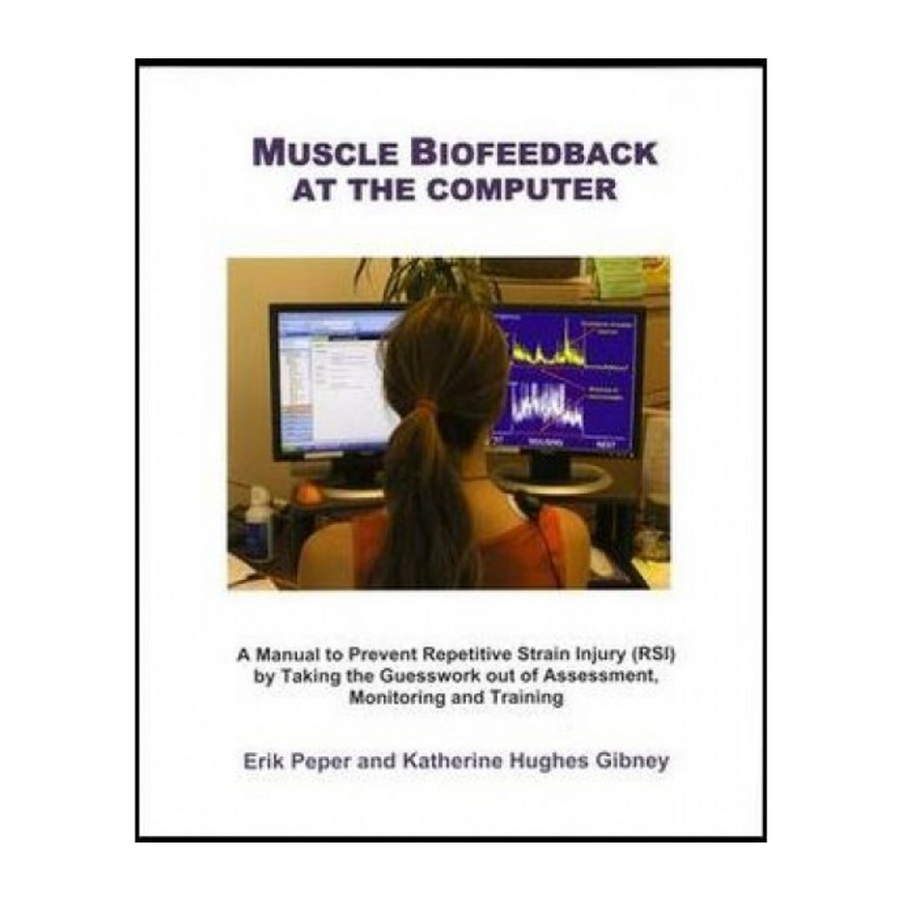Muscle Biofeedback at the Computer is an exciting and indispensable guide for the prevention of Repetitive Strain Injury (RSI). By Peper and Hughes-Gibney
This comprehensive text provides clinicians or the computer user with step-by-step instructions for implementing proven strategies to promote healthy computing. It is based upon using muscle feedback (surface electromyography) with the eight components for healthy computing. The book details the “nuts and bolts” of how to do it! It teaching how to use muscle feedback and outlines in detail a seven session group training program to become an effective coach. It gives guidelines and techniques to apply muscle feedback for awareness, assessment, training and coaching fellow employees. As Denise Fox Needleman, Associate Vice President, Human Resources, Safety & Risk Management of San Francisco State University, states: ”Their peer-based models and techniques for ergonomic safety have been the most effective methods we have found to reduce our injuries.”
This book describes a proven approach in which work units that had no Worker Compensation Claims had trained coaches while work units with the most claims had no coaches. For this work, the San Francisco State University Ergonomic Safety Program that received a Governor of California Employee Safety Award.
Peper and Gibney present to the reader a systems perspective for maintaining health while working at the computer. They debunk many of the conventional myths surrounding employee safety and provide scientific and anecdotal evidence that attests to the efficacy of the concepts they present. Also included are many of the challenges and concerns for both individuals and corporations who contemplate changes in work styles, ergonomics or corporate culture. For example, understanding that Administrators might miss the value of financially supporting a healthy computing program, Peper and Gibney provide references to address cost concerns and provide evidence that implementing their program reduces discomfort and costs. They also present many of the challenges that they have encountered and suggest resolutions for these concerns.
Chapters 7 and 8 will likely be most coveted by entrepreneurs seeking to translate knowledge into action in the workplace and are worth more than the price of the whole book. Here Peper and Gibney provide a brilliant template for replicating San Francisco State University’s award-winning 'Healthy Computing' program in various settings. The empirical foundations of the suggestions made throughout the section are presented and the materials necessary for executing a 'Healthy Computing' program are laid out in sequence and include many samples of handouts.
Muscle Biofeedback at the Computer provides a consistent 'you can do this' message, where the 'you' is anyone who uses a computer and the 'this' is learning how to optimize your health while computing. In a clear-cut fashion, Peper and Gibney succeed at educating as well as entertaining the reader about a topic that would mostly be of interest to a clinical researcher or specialist. I commend Peper and Gibney for providing us with an articulate, highly readable and practical guide valuable to anyone interested in improving the health of people using computers. It is an essential guide for every ergonomists, physical therapists, biofeedback therapist, stress management consultants and corporate safety teams.
Author: Erik Peper and Katherine Hughes Gibney
ISBN-10: 0978192702
ISBN-13: 9780978192709



